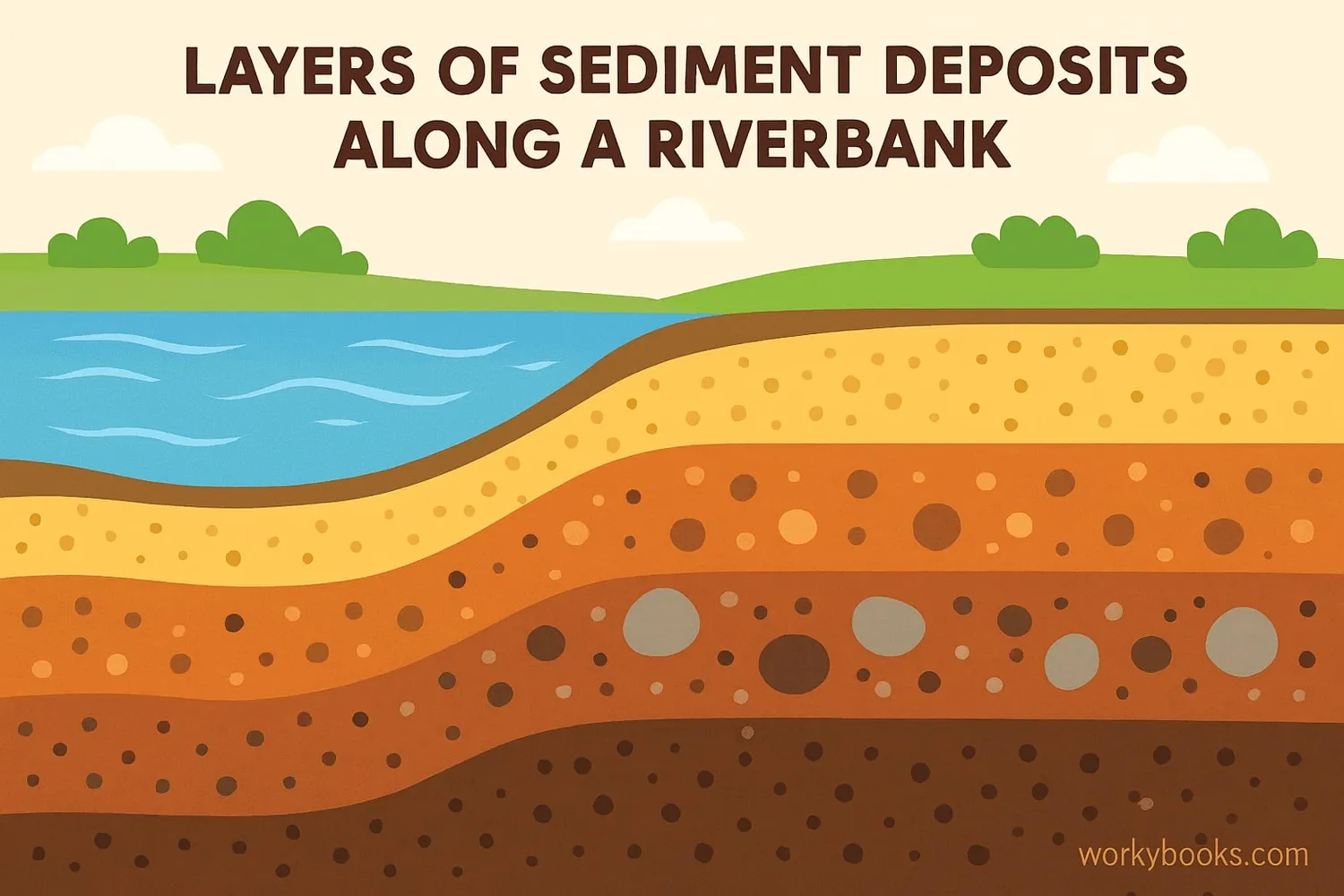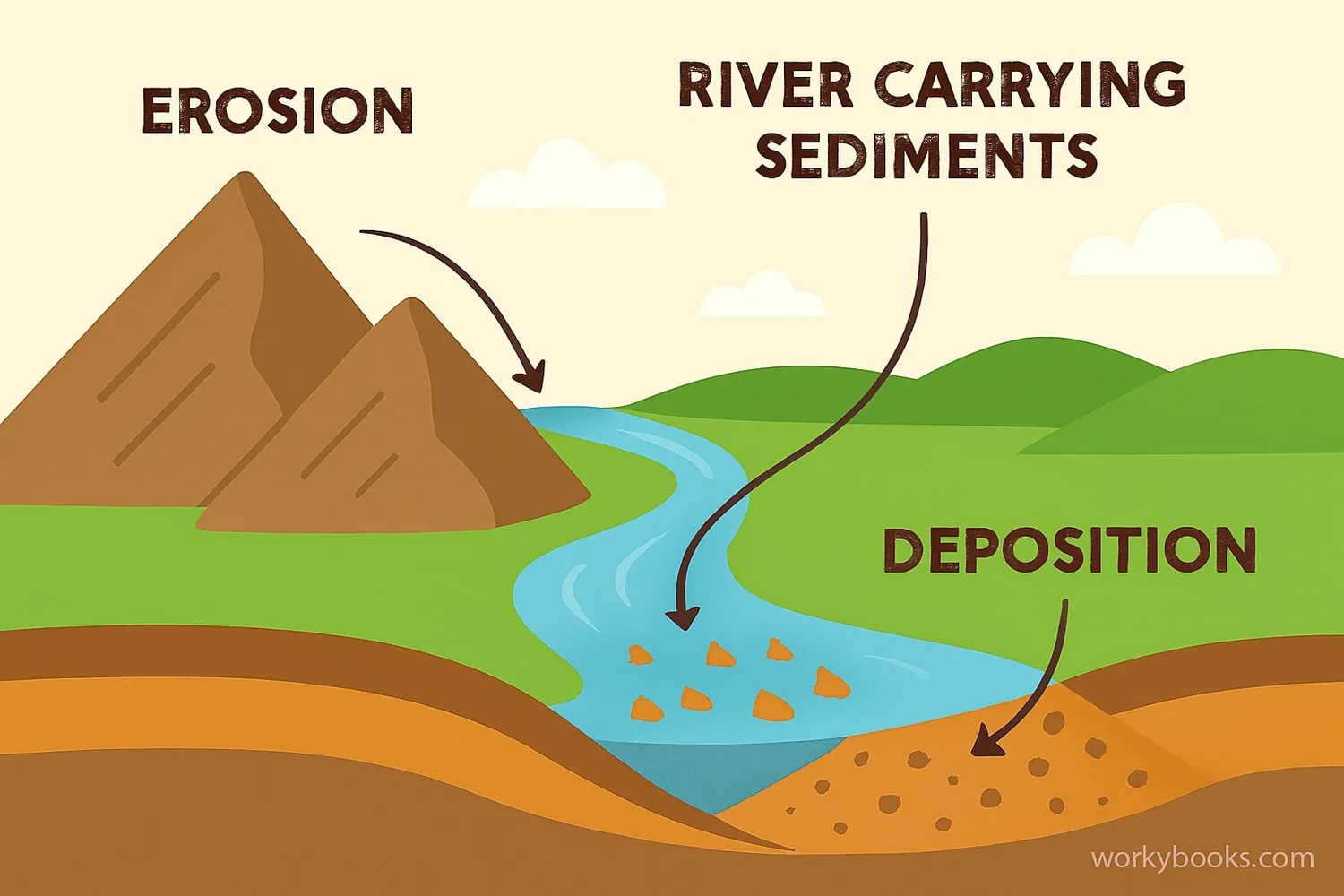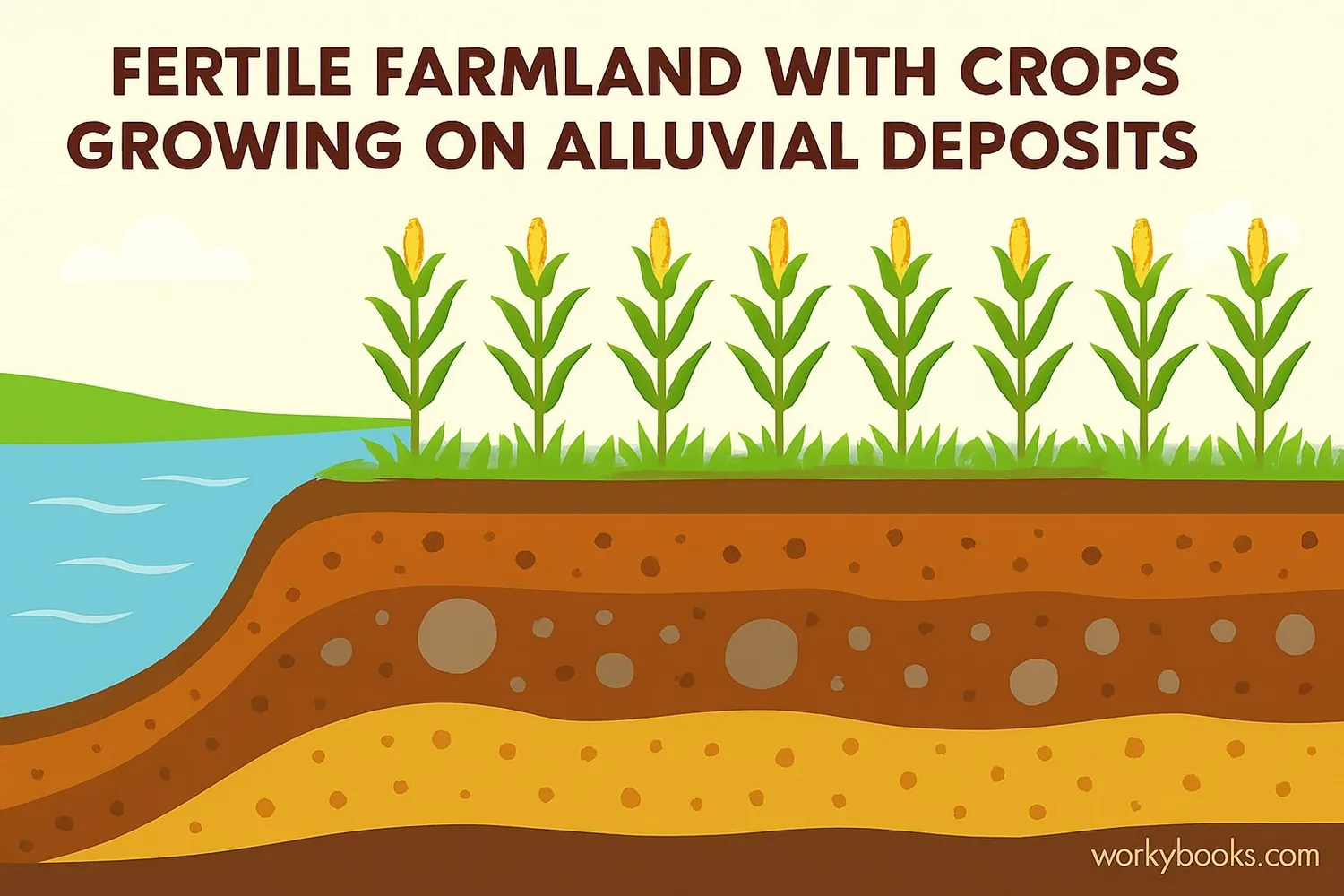Alluvium - Definition, Examples, Quiz, FAQ, Trivia
Discover how rivers shape our world with sediment deposits that create fertile soil and unique landscapes
What is Alluvium?

Alluvium is the name for sediment deposits that are created by flowing water in rivers and streams. These deposits are made up of materials like sand, silt, clay, and gravel that water carries along as it moves.
Think of a river as a giant conveyor belt that picks up tiny pieces of rock and soil from one place and drops them in another. When the river slows down, it can't carry these heavy materials anymore, so they settle to the bottom. Over many years, these deposits build up to form what we call alluvium.
Did You Know?
The word "alluvium" comes from the Latin word "alluvius," which means "washed against." This makes sense because alluvium is created when water washes soil and rocks against riverbanks!
How Alluvium is Formed

Alluvium forms through a fascinating process that involves erosion, transport, and deposition. Here's how it works:
Erosion
Flowing water picks up and carries away rocks, sand, and soil from riverbanks and riverbeds
Transport
The river carries these materials downstream, sometimes for very long distances
Deposition
When the water slows down, it drops the heavier materials, creating sediment deposits
Accumulation
Over time, these deposits build up layers of alluvium, often creating fertile floodplains
Rivers carry different types of materials in different ways:
• Large rocks and pebbles roll along the river bottom
• Sand grains bounce along in a process called saltation
• Silt and clay particles float suspended in the water
The size of the materials in alluvial deposits tells us how fast the water was moving when it dropped them. Faster water can carry larger particles!
River Speed Matters!
A fast-moving river can carry rocks the size of baseballs, but when the water slows down, it can only carry tiny clay particles. That's why you find larger stones in mountain streams and fine silt in slow-moving rivers!
Why Alluvium is Important

Alluvium plays a crucial role in our world and supports life in many ways:
Fertile Soil
Alluvial soils are among the most fertile on Earth, perfect for growing crops
Human Settlement
Ancient civilizations developed along rivers with rich alluvial soils
Mineral Resources
Alluvial deposits often contain valuable minerals like gold and diamonds
Some of the world's most important agricultural regions are built on alluvial deposits:
• The Nile River Valley in Egypt
• The Ganges River Delta in India and Bangladesh
• The Mississippi River Valley in the United States
• The Amazon River Basin in South America
These regions can support large populations because the regular flooding of rivers deposits fresh nutrients on the land, creating incredibly productive farmland year after year.
Ancient Civilizations
The earliest human civilizations—in Mesopotamia, Egypt, India, and China—all developed in river valleys with rich alluvial soils. The regular flooding of these rivers created fertile land that could support large populations!
Alluvium Knowledge Check
Test your understanding of alluvium with this quiz. Answer all 5 questions to see how much you've learned.
Frequently Asked Questions
Here are answers to some common questions about alluvium:
Interesting Alluvium Facts
Discover some amazing facts about alluvium and river deposits:
Farming Fact
About 80% of the world's agricultural production comes from alluvial soils! These fertile deposits support crops that feed billions of people.
Layer Upon Layer
Some alluvial deposits are hundreds of meters thick! The Mississippi River Valley has alluvial deposits that are over 300 feet deep in some places.
Golden Opportunities
The largest gold nugget ever found, called the "Welcome Stranger," was discovered in alluvial deposits in Australia in 1869. It weighed over 200 pounds!
Mighty Deltas
The Ganges-Brahmaputra Delta is the world's largest river delta, formed entirely from alluvial deposits. It covers about 59,000 square kilometers!


